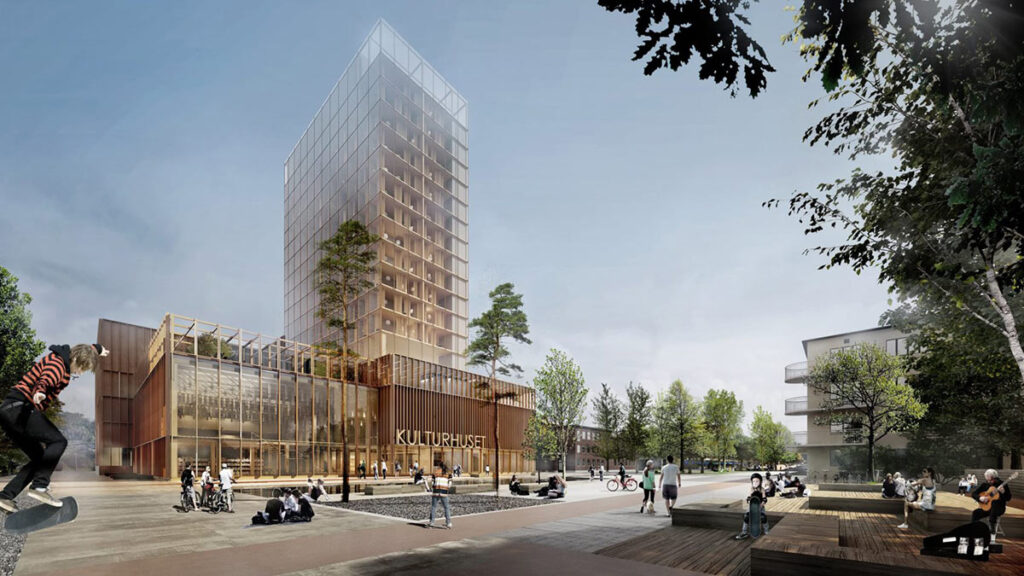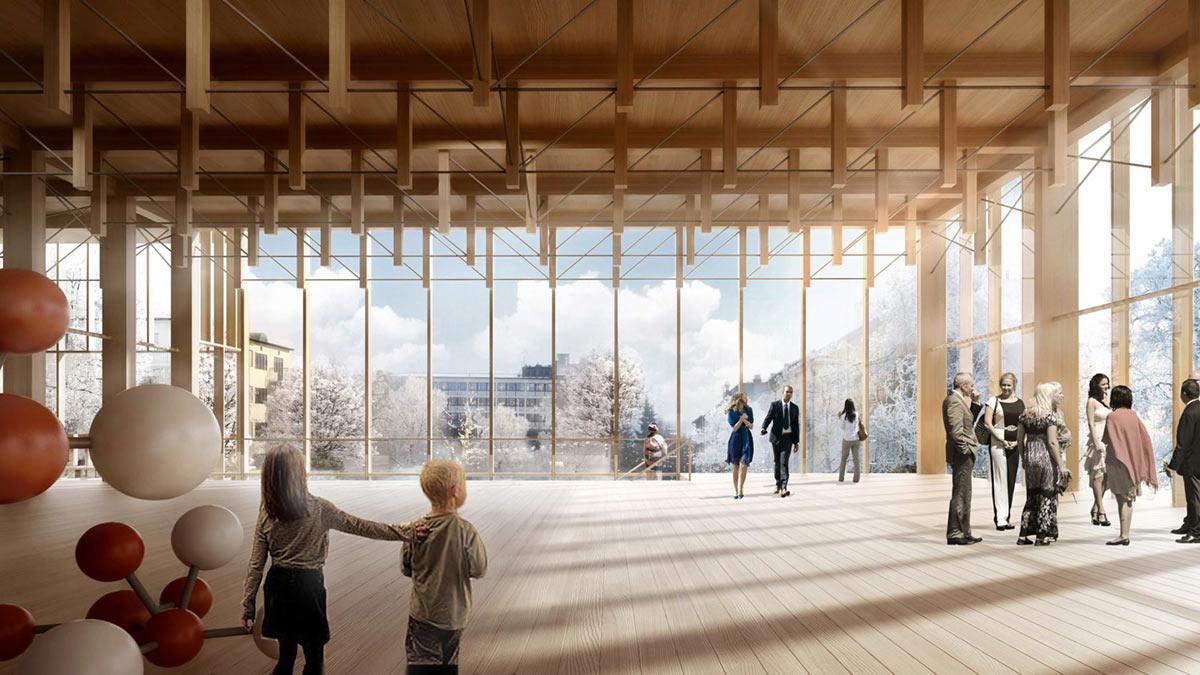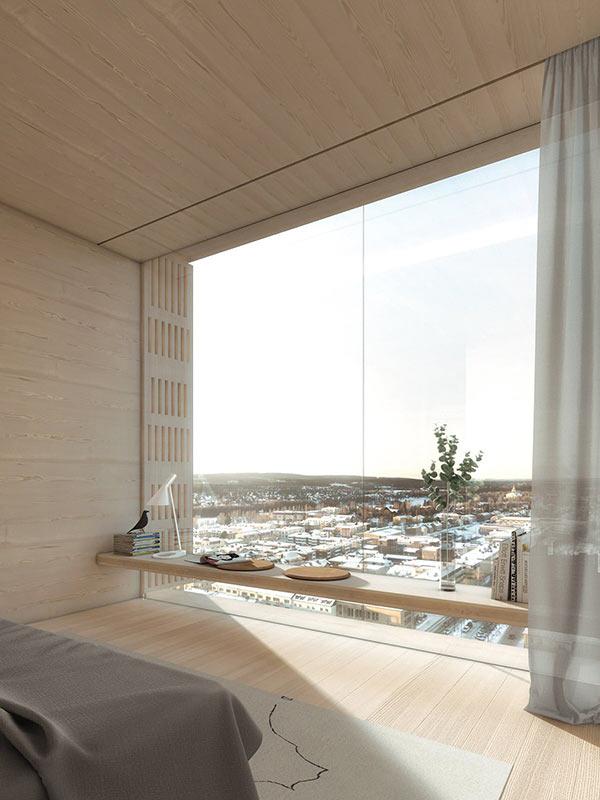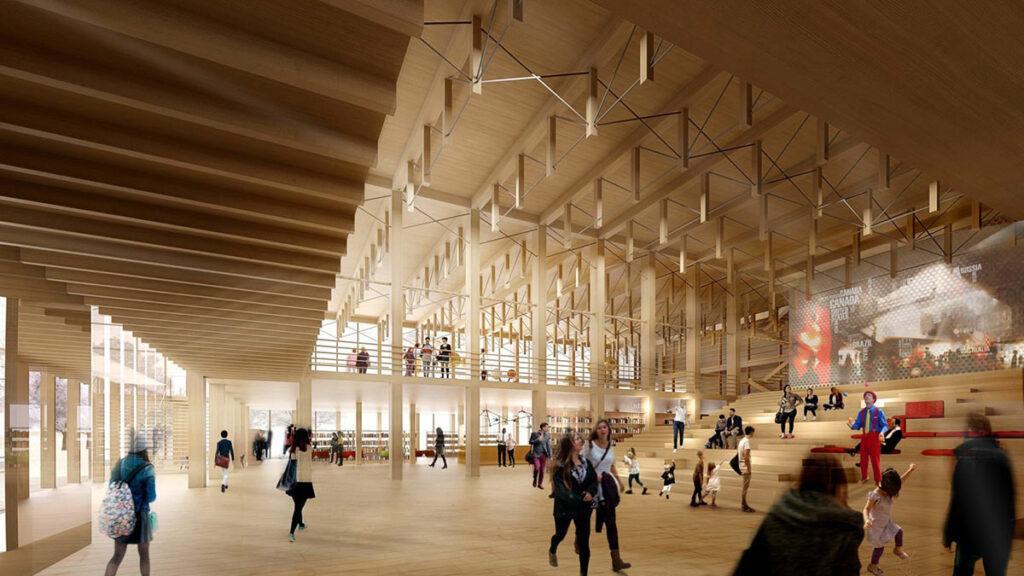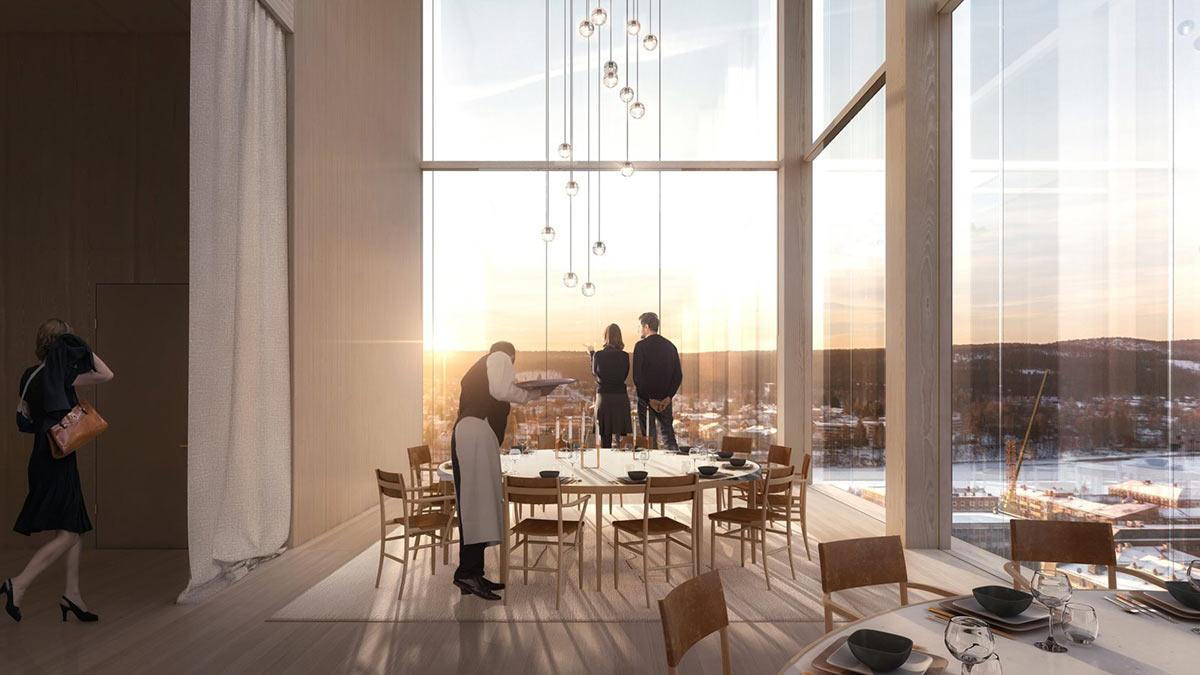Timber through and through
The Scandinavians have shown their pioneering strength once again, this time in the design for a new cultural centre. The Sara Kulturhus in Sweden’s Skellefteå is among the world’s tallest high-rise structures built entirely from wood.
Sweden has a long tradition of building with timber. However, until 1994 a height restriction meant that just two storeys were allowed to be constructed. This was a precaution that originally resulted from numerous fires in the cities long ago. But in the meantime, the maximum height limit has been dropped, and Sweden has achieved a special status when it comes to timber construction. “If you can manage to design a timber building that’s tall and stands, then you can build it,” says young architect Oskar Norelius. He worked alongside colleague Robert Schmitz at White Arkitekter to develop the winning design “Sida vid sida” (“Side-by-side”) for the Sara Kulturhus in Skellefteå.
This city in the north of Sweden, just beneath the Arctic Circle, has essentially been given a new cultural one-stop shop. Theatres, a museum, art gallery, conference centre and the city library, plus a new hotel, are intended to serve as people magnets.
A plyscraper without a concrete core
The doors to the cultural centre opened in 2021. Standing 80 metres tall with 20 storeys, it is the world’s second highest building made entirely of wood. The highest is Mjøstårnet in Norway’s Brumunddal. While most such buildings are built in timber hybrid design, the Scandinavian structures are without a concrete core as reinforcement. Indeed, this pioneering construction in northern Sweden even includes CLT elevator shafts.
When we’re talking timber in tall buildings and in larger buildings, the raw material is engineered wood.
Oskar Norelius, architect
Surroundings forests supplied all the wood for the new cultural centre in a bid to remain local. And the framework was constructed only 60 km away in Bygdsiljum. Similarly, the general contractor had the 205 modules for the hotel rooms prefabricated in Renholmen, just a few minutes’ drive from the building site. The architects emphasize that this project was only possible due to close cooperation between the various craftspeople, plus the expertise of local timber experts and the latest findings in engineered wood technology.
High-tech construction material
The main challenge for the architects was getting people to accept the risk of building something that had not been built before. Norelius says that people doubt timber as a construction material. Everyone has a connection with wood and is familiar with it from smaller buildings, such as cabins. “They ask themselves: Will it even stand? And what about fire and water?”
But there is a big difference between the wood used for cabins, and a high-rise like this one. “When we’re talking timber in tall buildings and in larger buildings, the raw material is the same, but this is engineered wood,” Norelius explains in the project video. He is referring to CLT (cross-laminated timber) and glulam (glued laminated timber), which are the timber construction elements used in such high-rise buildings.
You will feel that you’re in a high-rise, but somehow you will also be in a wood cabin.
Oskar Norelius, architect
In a fire, the surface of the wood is charred and thus protects the inner layers from the heat. Incidentally, this effect has been used in Japan for centuries as the wood sealing technique shou sugi ban.
Responsibility for the climate
The design submitted by White Arkitekter received the MIPIM Future Project Award in 2018. The international architectural firm focuses on building with timber as a renewable material, and also on ecologically sustainable architecture. Their zero-energy hotel recently opened outside Stockholm, as the first of its kind in Scandinavia. “As architects, we have a responsibility to take action against climate change,” their mission statement reads.
The Sara Kulturhus is now open to the public. “When I’m standing on the 20th floor of the building, I expect to be surprised because you’ll have a view over the entire landscape around Skellefteå,” Norelius envisioned during construction. “You will feel that you’re in a high-rise, but you will also be in a wood cabin somehow.”
Text: Gertraud Gerst
Translation: Rosemary Bridger-Lippe
Images: White View, Luxigon, White Arkitekter
